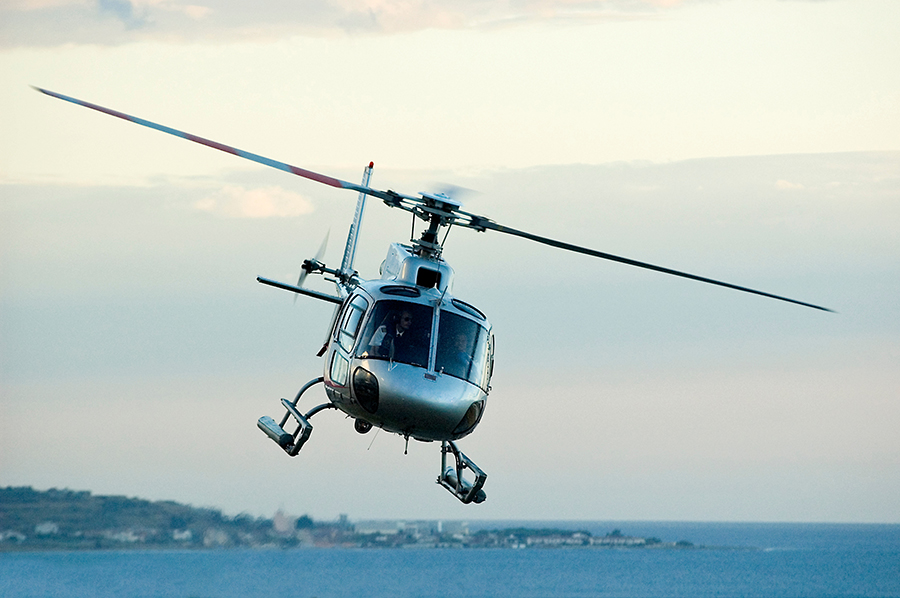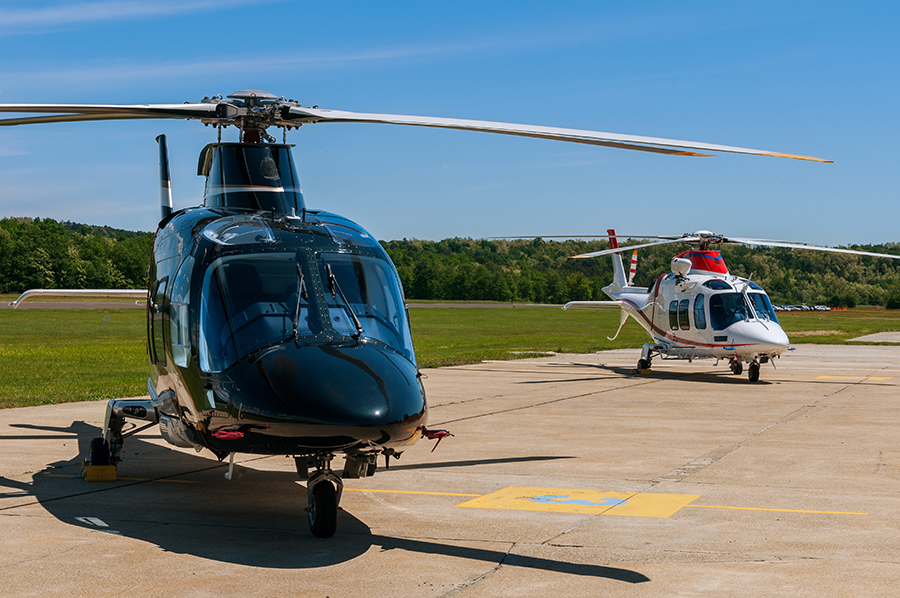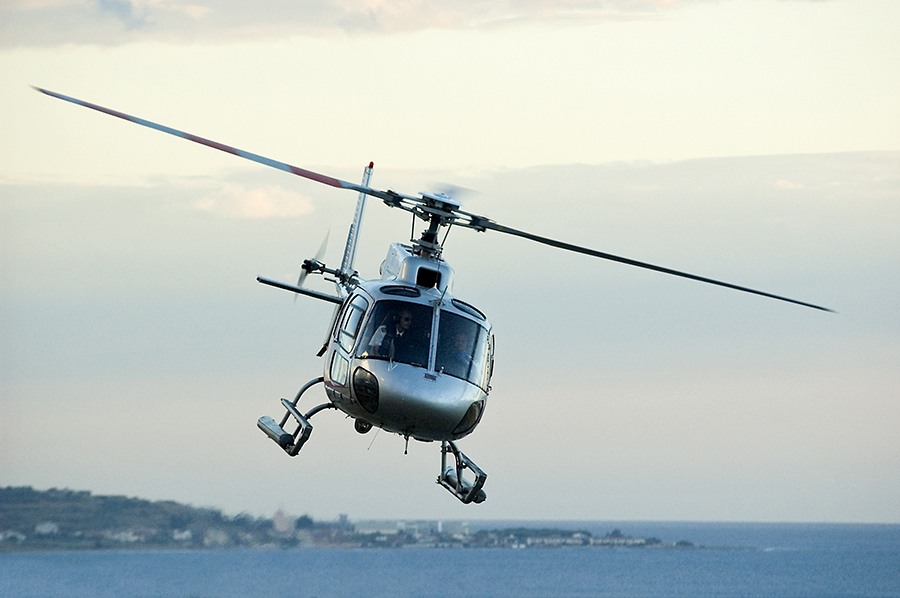An introductory helicopter lesson, sometimes called a trial lesson discovery flight, air experience flight, or demo flight, is frequently the first lesson potential helicopter students have before starting the more formal course for the Helicopter Private Pilot’s License. Virtually all helicopter training schools can offer these introductory lessons. Indeed, some people do them as a stand-alone helicopter flying experience, without continuing on with the course. In addition, some schools sell introductory lesson gift vouchers, so you might be able to persuade someone to buy you the best birthday or Christmas present you’ll probably ever have!
So what exactly is an introductory helicopter lesson? How long does it last? What does it involve, and where should you go for it? And do you need to do any preparation in advance for this first helicopter lesson?
Over the years I have taught introductory helicopter lessons to many different types of people, so I am familiar with what new students want to know. So we will now take a look at the answers to all these questions and other similar ones.
Which Flight School?
Which flying school should you go to for this first flight? People often worry incessantly about this, but to be honest, at this point, it probably doesn’t matter all that much. Unless there are definite reasons against it, perhaps just go to the one closest to your home or most convenient for you. If and when you decide to take up helicopter flying seriously, then is the time to start comparing schools – and you need not necessarily continue on at the school where you took your introductory lesson.
The Length Of The Introductory Flight
Most flying schools offer introductory lessons of various lengths, typically half an hour and an hour, though some will have twenty-minute and forty-minute flights too. How long you need will depend largely on what you want to do. A twenty-minute introductory lesson will provide a wonderful first experience of helicopter flying, but it won’t really give you an opportunity to have a go on the controls. If you have a half-hour introductory lesson, you should get a chance to try flying the helicopter yourself. But you are unlikely to be able to have time to attempt hovering, which is undoubtedly the most fun thing you can do in a helicopter, and the maneuver that many people really want to try.
So if you really want to try hovering, and you can manage to arrange it, and especially if you are thinking of carrying on with helicopter training, book forty minutes or an hour for your introductory lesson. It is also important to make sure you have enough time if there are a number of other things which you would definitely like to do. For instance, you might want to take photos of your house, which is some distance away, then have a go on the controls, and also try some hovering. It simply won’t be possible to fit all that in unless you have a fairly long introductory lesson. If necessary, the instructor or operations manager can advise you as to how long you’ll need when you phone up to book your flight. But do make sure you arrange this sort of thing in advance. Don’t turn up for a twenty-minute introductory flight, then say that you want to tour the local area, take some photos, and then try hovering. There may well not be enough time.
Advance Preparations For The Introductory Flight
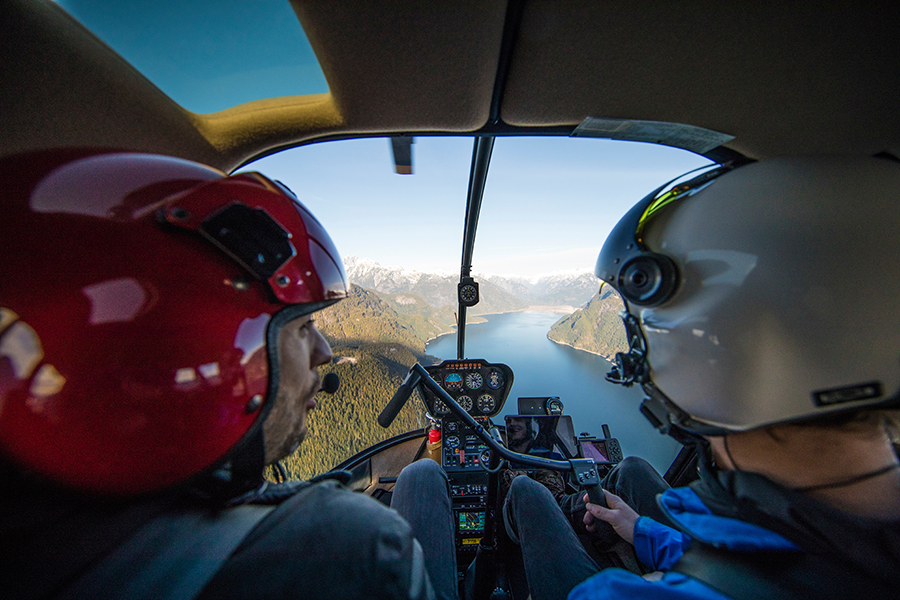
Having booked your introductory lesson, you don’t have to do anything else. This lesson is designed for people who know nothing about flying helicopters, and your instructor won’t expect you to have prepared for it. However, you will get the most out of it if you know as much as possible about helicopters in advance. So now is the time to read up about them if possible. If you have any questions, make a note of them so that you can ask your instructor on the day of your introductory lesson. However, bear in mind that helicopter schools are often busy, especially at weekends, and your instructor might not have the time to tell you everything there is to know about different helicopter types or to give you a comprehensive lecture on rotary aerodynamics!
On The Big Day
On the day of your introductory lesson, phone the helicopter school and ask if the weather is suitable, even if they haven’t suggested that you do this – although they probably will. Once you know that you’ll be flying, leave early, allowing plenty of time to get to the airfield. This is especially important if you’ve never been there before. Some airfields, particularly small ones, can be incredibly hard to find. The flying school may have a full schedule, and won’t appreciate you being an hour late for your introductory lesson, and in some cases, they may not be able to fit you in at all. Also, you don’t want to be stressed and worried before you even start; it’ll make your flying much more difficult since you really need to be relaxed to fly a helicopter. However, if you are unavoidably delayed, do phone the school, as schedules can sometimes be rearranged if they know in advance.
What To Do On Arrival
It is often tempting, when arriving for an introductory lesson, to just leave the whole thing to the instructor. After all, you may reason, he or she is the expert, and has done this many times before. Surely the instructor will know what you should do, and where you ought to go during your flight. But if you want to get the most out of the experience, this is not necessarily the best thing to do. People book introductory helicopter lessons for a vast number of reasons – it may be a one-off experience, they could be fixed-wing pilots wanting to try something new, they might be wanting to learn to fly, or even planning a new career. So people expect different things from their introductory lessons. Some might just be happy to look at the view and take photos of their house, others can’t wait to have a go on the controls, while a few want to be shown some exciting maneuvers that helicopters can do. All of these things are possible, but instructors aren’t psychic; we can’t know what you want if you don’t tell us.
You also need to say if during your introductory lesson you want to see a demonstration of something specific, for instance, a simulated engine-off landing. Some people would love to know how you land a helicopter if the engine fails; to others, the mere idea is terrifying. So if you are interested in having this kind of thing demonstrated, say so. If you really, really want to have a go at hovering, or landing in confined areas, or something else, tell the instructor. And conversely, if you’re a bit nervous and want to take things very slowly, tell the instructor that. We won’t think badly of you; we’ll just try not to scare you and allow you to get used to flying at your own pace. You don’t even need to take the controls at this early stage if you don’t feel ready to do so, but do let the instructor know this if it is the case.
What Will The Introductory Lesson Be Like?
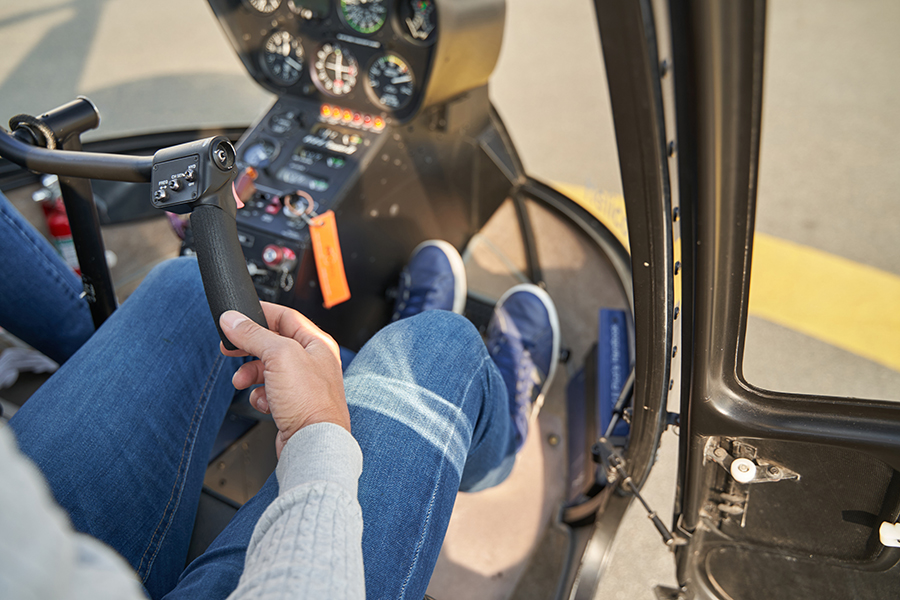
Your introductory lesson should start with a briefing, during which you can explain all of the above points concerning what you want to do and what you hope to get out of it. You will also be told about the main controls of the helicopter and how they work. This may be done sitting in a classroom with the instructor possibly drawing diagrams on a board, or it could be outside next to the helicopter, particularly if the weather is fine. It really makes no difference. Listen carefully, but don’t worry too much if you can’t follow or remember everything, as your instructor will go over it all again in the air. Then you’ll have a short safety briefing, with a warning in particular not to walk around the back of a helicopter when the rotors are turning, as you can’t see the rapidly spinning tail rotor.
Once you actually get into the helicopter, the most important thing is to try to relax. For some people, the instructor/student relationship takes them back to being at school; they feel like they’re being tested, and that the instructor is going to mark their performance. Believe me, that’s not the case. My main aim, when I have introductory lessons for students, is to make sure that they enjoy them. For some people, that means just looking at the view, and experiencing the ‘Wow!’ factor of the first helicopter flight. For others, it involves learning as much as possible. For most people, it’s probably a mixture of these two. But again, your instructor isn’t a mind-reader, so it helps us if you give some indication of how you feel and what pace you want to go at.
Taking The Controls
When it’s your turn to take the controls, if you’ve opted to do so, listen carefully to what the instructor tells you, and then be ready to try it. Again, try to relax, and don’t panic if the helicopter seems to turn into some mad uncontrollable machine the moment you take over. Every helicopter has dual controls, and although your instructor may be sitting there looking completely relaxed, he or she can have that helicopter back under control more quickly than you would believe possible. On the other hand, don’t expect to be able to fly the helicopter on your first attempt, even if you’re a fixed-wing pilot or know that you’re usually a quick learner. Helicopters are unstable, twitchy little machines, especially the Robinson R22, on which most people learn these days, and controlling them can feel impossible in the beginning.
However, if you continue with helicopter flying, you’ll probably find that you’ll pick it up faster than you can realize at this early stage. Actually, you’ll learn more rapidly if you don’t get too concerned about it all, so don’t grit your teeth and try too hard, but just relax and have a laugh about your own attempts. That kind of alert but relaxed effort somehow seems to work best. In a way I don’t quite understand, it appears to allow you to develop new helicopter-flying connections between your hands and feet and brain, as it were. Supreme effort and iron-willed determination can actually get in the way of that process, and slightly more-laid back students are often the ones who make progress faster.
Hovering

If you are a fixed-wing pilot or have done any other sort of flying, you possibly won’t find flying helicopters in the air all that hard after the first few attempts. However, hovering is a different matter. Everyone finds hovering difficult in the beginning. In an introductory lesson, you may not get a chance to try it at all, and if you do, it will probably only be with one of the three controls. But if you do try it, don’t make a snap decision as to your rotary flying ability based on these few minutes. I had a friend, a fixed-wing pilot, who booked an introductory helicopter lesson, and told me afterward, “I’ll never ever be able to hover; I know that”. I’m quite sure he was wrong.
On the other hand, some people do master hovering relatively quickly. Again, this doesn’t really prove much about their eventual flying ability. Everyone is different, and some people learn particular things faster than others. So try to simply enjoy your first hovering experience, however easy or difficult you find it.
After The Introductory Lesson
Sooner than you will believe possible, your introductory lesson will be over. Time seems to go faster than usual when you’re learning to fly helicopters, and I’ve even been accused by one person of giving all my other introductory lesson students longer than she had! You will probably be exhausted from the 110% concentration required, but so exhilarated that you might not realize it until you fall asleep in front of the TV later on. And your instructor will probably tell you…that you’ve done really well! It will be quite true because managing to control a helicopter at all after only a few minutes of instruction is pretty good.
Your instructor might also tell you after your introductory lesson that you’re a natural pilot, but I’d take that one with a pinch of salt. Instructors do tend to exaggerate about this sort of thing, and in my experience, there are no natural helicopter pilots; rotary flying is too unnatural an activity for them to exist. It’s true that some people pick it up faster than others. For example, those with experience on machines that require good coordination, such as JCBs and forklift trucks, or who have flown radio-controlled model helicopters, seem to have a definite advantage in the beginning when it comes to hovering. And generally, younger people learn a little faster than those of more mature years. But it really makes little difference in the end, so if you are thinking of continuing, but are one of those who struggled initially, don’t let it bother you. After all, that was only your first lesson of many, and you now have the rest of your life in which to become a skilled helicopter pilot…
Conclusion
So if this has whetted your appetite, got you really excited, or even just made you rather curious about those strange little machines called helicopters, why not call up your nearest flying school, or drop in and visit them, and book an introductory lesson. I think I can safely promise that you’ll never regret having done it, and at the very least will have a fascinating experience. And who knows, you may find that you have started down the path to a whole new hobby, or even a brand new career.

